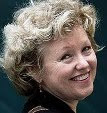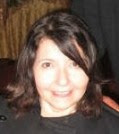

One of the questions fiction writers are often asked is how we come up with story ideas. And if you ask ten different writers, you might get ten different answers.
At a writer’s conference, the keynote speaker said her best ideas come from newspaper headlines. A writer friend of mine scours Dear Abby and other advice columns because they are filled with human conflict, the driving force behind any good story.
Stories are all around us
Many of us get our best ideas from snippets of conversation we hear. My first novel, The Wife of Reilly, is about a woman who secretly tries to find a new wife for her soon-to-be ex-husband. That idea came about when a friend was having a bad husband day, and said, “I wish I could leave him, but he wouldn’t be able to function without a new wife.” A new wife? “Yes” she sighed, “But I’d have to find her for him, just like I do everything else around this damn house.”
I knew she was kidding but was intrigued by the thought. How would one do that? Put an ad in the paper? Host a single’s party and auction him off? What would it look like if someone really tried to do that?
Sometimes, a story idea can stem from a misunderstanding. My family stopped at an In ‘N Out Burger that was packed with Boy Scouts, undoubtedly on their way to a jamboree of sorts. At the sight of them, my daughter, Katie remembered a conversation she’d had earlier at her Brownie meeting. “Lindsey’s brother tried to join the Girl Scouts,” Katie reported.
I called Lindsey’s mother, who set me straight. Still, it was a funny idea: a boy trying the join the Girl Scouts. What type of shitstorm would follow if a boy tried to join Girl Scouts? And speaking of setting straight, what would happen if the boy was gay and his father was a traditional, macho firefighter? Hence, the birth of Brownie Points.
Smaller ideas can come from misunderstandings of offhand remarks as well. I was at a writer’s workshop when an older woman raised her hand and said she was having trouble with her project. “Halfway through my memoirs, I lost interest,” she said. I suppressed a laugh. Losing interest with one’s own memoirs is a bad sign indeed. It was also a great line, I thought. So I recycled it as a line of dialogue that one of the prospective new wives told Prudence Malone, the current wife or Reilly.
Ask for input
I could not have sent Prudence on more than 50 blind dates without a little help from my friends. I sent out an email asking for worst date stories and had dozens by lunchtime. My friend Deborah told me about a med student who reached across the table and pulled at her lower eyelid. He claimed he was checking the color for anemia because he was concerned about her vegetarianism. You simply cannot make that stuff up. Nor do you have to if you ask for input. People love to share their stories.
Open the newspaper or go online
For character development, I always check the personal ads. Reading people’s self-perceptions really reminds writers how complex we all are. Or are not.
When I was invited to contribute to Jane Green’s holiday anthology, This Christmas, I decided to do a gender swapped sequel to the The Wife of Reilly about a woman trying to find a new husband for her current husband’s ex-wife. A such, I spent a lot of time cruising internet dating sites. Most guys were decent looking with a benign bio (“loves spaghetti and sunshine!”), but some were real material. “If you got an attitude, don’t let the door hit your ass on the way out the door!” one man wrote in his bio. The rest was equally angry ranting.
Story ideas, characters and snippets of dialogue are all around us if we just keep our eyes and ears open to it. Start every day reminding yourself that you are open to the stories that are all around us. The start gabbing with friends, reading the newspaper and eavesdropping at Starbucks.















